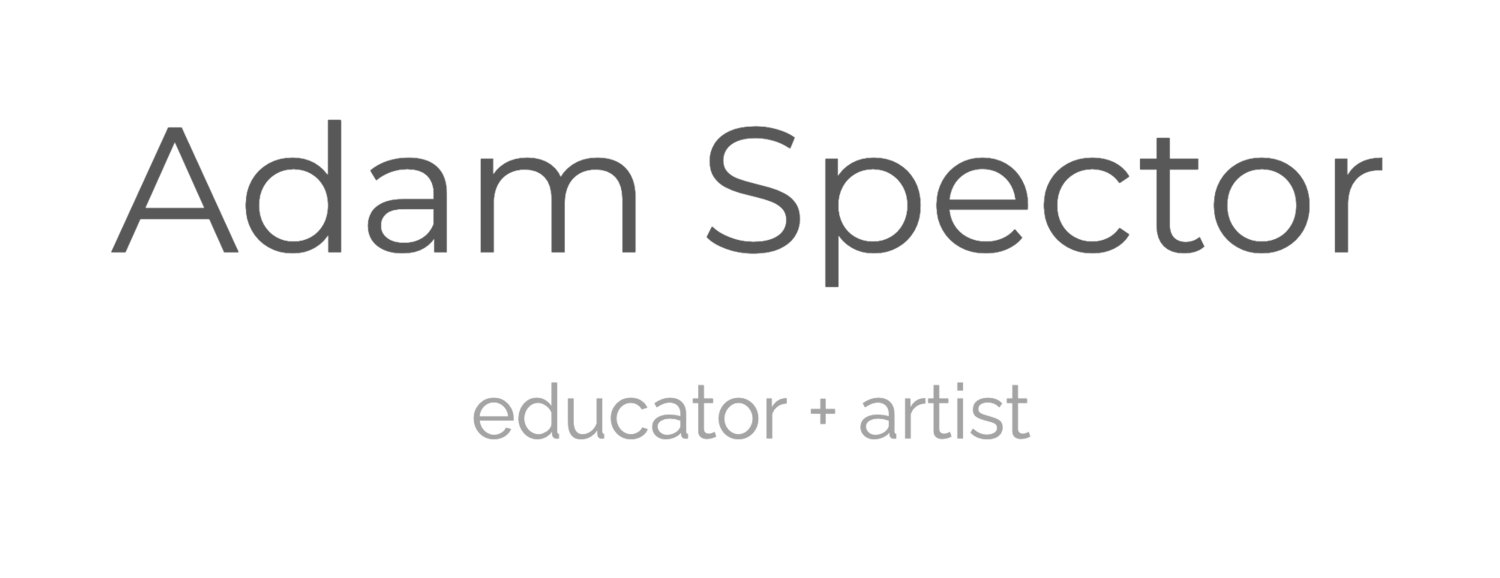Teaching Philosophy
Adam Spector, 2022
As educators, our role in the lives of students can be profound. We have the opportunity to empower them with the ability to think critically, make informed choices and broaden their perspective. We also have a responsibility to meet students where they are developmentally, understand and support them emotionally and create a safe space for them to learn about themselves and the world around them. We meet our obligations to all students by maintaining high standards, benchmarks and providing rigorous learning opportunities. We teach students to be life-long learners and prepare them with the skills they need to succeed in an increasingly competitive global society.
As an artist-teacher, I am in a unique position to teach about culture and promote creative critical thinking in my students. This interdisciplinary skill is built on the high order thought processes of analysis and evaluation. By asking students to respond to artwork emotionally they are better able to understand themselves. By asking them to evaluate work against criteria, they are able to develop critical thinking skills. I combine imagery, concepts, art materials and problem solving to provide students with a positive avenue for personal expression and development in media and methods. I consider the individual needs of each of my students and differentiate instruction to support their learning. I strive to create a classroom environment where students can collaborate and engage in the process of self discovery. Through presentations, digital resources, research and exemplars, I teach about culture, art within a historical context and about diverse artists and their work. I engage students in meaningful dialogue about the elements and principles of art in a contextualized way, making this content relevant and transferrable. One of my strengths as a teacher is forming durable relationships with students by treating them with respect and creating a safe space. I am interested in students, their families and communities and I am invested in helping them meet their potential.
Art and studio experiences are integral to a well-rounded education. The lessons and curriculum I design promote connections between content areas. I ask students to research in the planning stages of a project with drawing and writing and to self-evaluate in written and verbal form at the end of a unit of study. I assess student work formatively and authentically using rubrics that I create with each project. I align my planning with state and national learning standards as well as the new framework for culturally responsive- sustaining education.
I understand the profound responsibility we have as educators. I realize that the path to becoming a distinguished practitioner requires hard work, continual learning from colleagues and administrators and a great deal of reflection on one’s own practice. I believe in order for lessons to be durable and relevant, students must be active participants in their own learning. I strive to create a classroom environment where students can take an active role in their education while feeling safe, supported and valued.

